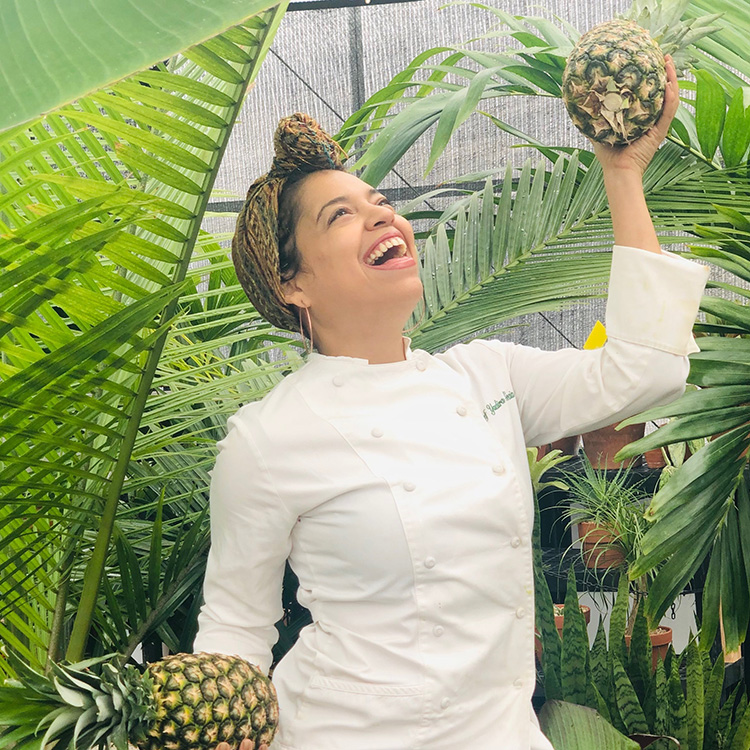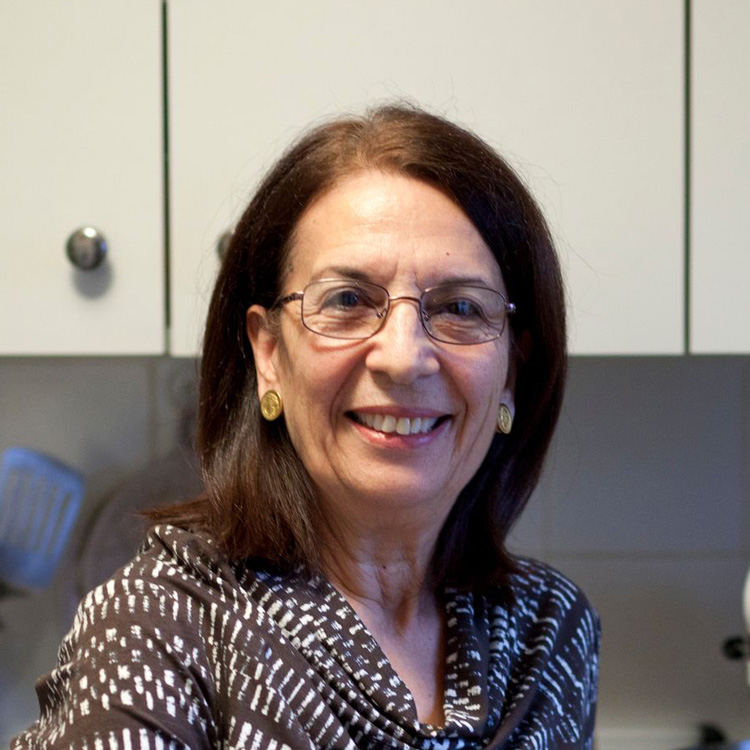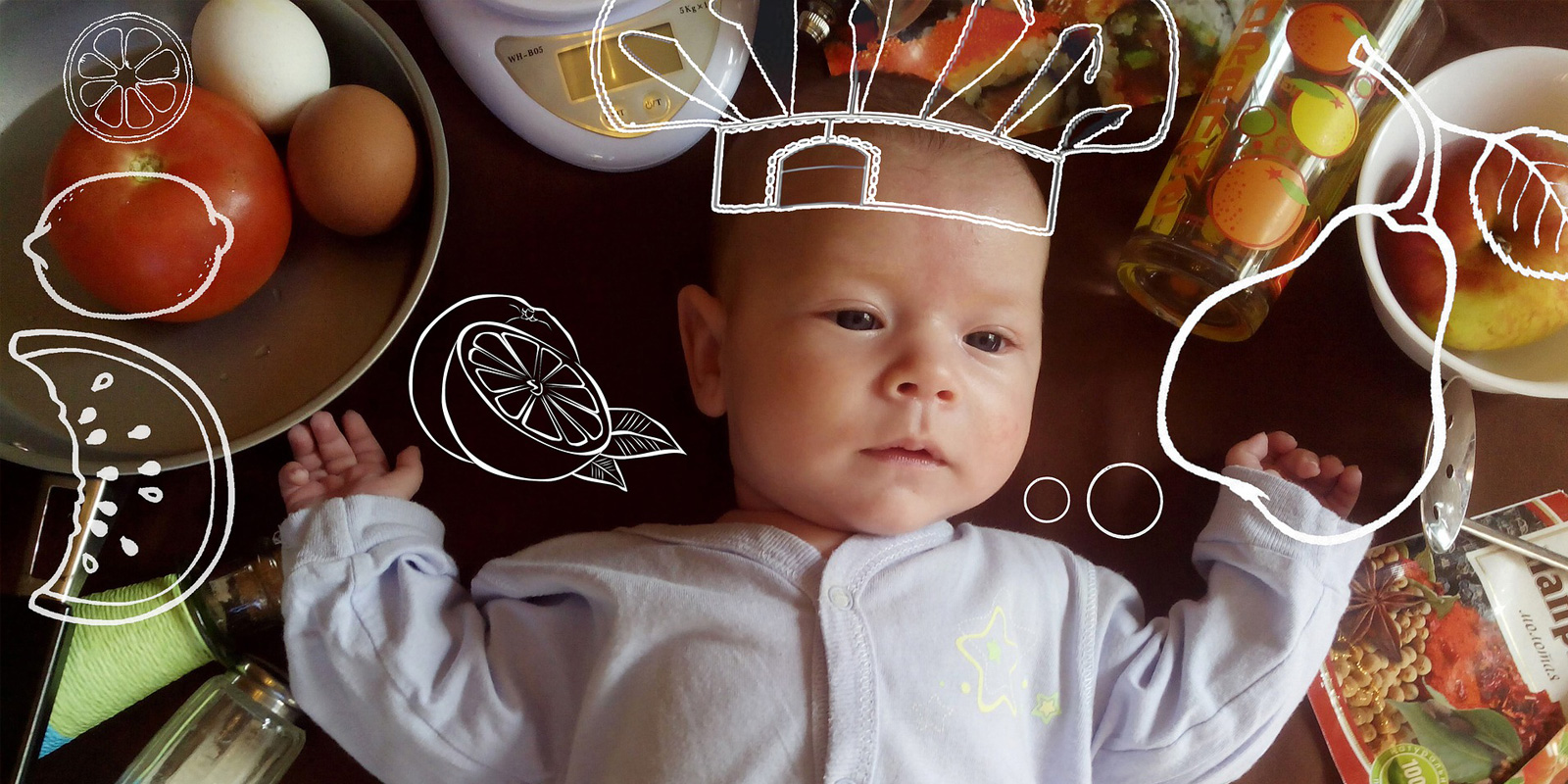A warm bite of pumpkin pie. Crisp potato latkes. Steam rising from a savory tamal. The tastes and aromas of holiday foods, served by loving hands, form some of our first childhood memories. As we approach holidays during the coronavirus pandemic, most families are wondering how to hold onto cherished traditions while keeping ourselves and loved ones safe. For too many, these worries are compounded by loss — loss of friends or family, health, income, even food itself.
Is it possible to create memorable holidays for young children in the face of such disruption? Three food professionals answer with a resounding yes. With an eye to tradition, some creative use of technology, and lots of involvement from little ones, we can make this holiday season one to remember, deliciously.
Here’s how these pros plan to adapt, along with some timely tips for family celebrations. (These interviews have been edited and condensed.)

Tambra Raye Stevenson is a public health advocate, author and academic. She is the founder and CEO of WANDA: Women Advancing Nutrition Dietetics and Agriculture, inspiring a new generation of food “sheroes” from farm to health. Stevenson serves on the D.C. Food Policy Council, and is a researcher and PhD student in the American University School of Communications.
Raffel: How will you celebrate the holidays this year?
Stevenson: Kwanzaa is a Pan-African holiday for African Americans to connect to their African heritage. Kwanzaa is a time to celebrate the first foods of the harvest, for the seven days between Christmas and New Year’s. Every day represents a different principle, like “nia” for purpose, “imani” for faith. It’s an opportunity for the community to come together because part of connecting to African culture, like many indigenous cultures, is that community lies at the heart. So Kwanzaa provides that opportunity for reconnecting. Food is very much a part of it: you open your home, people come and gather. We have a reading or celebration, a libation pour for remembering ancestors who have passed. It’s a beautiful time to close out the year and open the new year to receive blessings.
Facebook: @IamWANDAorg
Twitter: @IamWANDAorg
Instagram: @_iamwandaorg
LinkedIn: @iamwandaorg
Raffel: What is a favorite holiday food you’ll be making?
Stevenson: The kinara (similar to the Channukah menorah) has seven candles. The middle is black, then there are three green and three red candles. I tend to make a dish that features those colors. So I make what I call African Pride Salad. It’s a kale salad with black eyed peas and some red peppers. It represents the three colors: green for the land; the red is for blood, life the people; and the black bringing us all together in the name of the culture.

Yadira Garcia is the Happy Healthy Latina, a “Community Foodtivist” whose cooking, teaching and youth food empowerment have been featured on NBC Latino, ABC News, The New York Times and BuzzFeed. She is currently Executive Chef at the Fortune Society, a nonprofit supporting successful reentry from incarceration and promoting alternatives to incarceration. Since March she has been serving over 200 emergency meals a day.
Raffel: How will you celebrate the holidays this year?
Garcia: I’m pulling on the past to deal with the present. As the daughter of an immigrant, a first-generation American, often my family was separated during special times. In immigrant communities we have always found ways to connect with family even when separated by seas or by land. Now it’s even better. I have had a holiday dinner with my great grandparents with the phone open and us blasting music on one side, and them blasting the same music — our holiday hymns, salsa and merengue — on the other. That’s how we create that connection: the songs we all listen to. And of course, recipes. While it feels like a challenging time, there’s still a way to enjoy the simplicity of the holidays, still be alive and connect to each other even if it’s not in the most traditional way.
Garcia: My mom and my partner’s 90-year-old grandma are living together, and his mom is two floors up. Now we have all the matriarchs in one building. We’ll cook for each other in our safety bubble. For us, that’s rice and peas and coconut milk, or Moro de Guandules. We have our pink potato salad; it uses beets to make the pink color. There are empanadas or pastelitos which are like our hand-turnover pies. You fill those with meat but I also fill them with vegetables and season them with sofrito that’s become a tradition in my family. And there’s pernil, roast pork. These are heavy dishes, so you have to dance it off after. And then you go into the bear cave for hibernation!

Despina Economou is an instructor with the League of Kitchens, a nonprofit that employs women from around the world who welcome students into their homes to teach their family recipes. Despina’s Greek cuisine has been featured by The Village Voice, Travel + Leisure and PRI’s The World. Her cooking classes have moved to Zoom; the next one is November 29, 2020.
Raffel: How will you celebrate the holidays this year?
Economou: Before the pandemic I used to cook in my home and bring some relatives over for Thanksgiving. But at this time I’m not going to do that. My daughter only, who lives in Manhattan, will come. When she comes, we will still keep our distance. I’m going to cook turkey, make a stuffing. It’s my special recipe that I do every year and she loves it. I make fresh cranberry sauce and I do some special Greek sweets. Then we are going Skype with my daughter and granddaughter in Italy and my relatives in Greece.
I have a tablecloth from Thanksgiving that my daughters, when they were younger, wrote I’m thankful for this, I’m thankful for that. And I wrote about what I was thankful for and my husband did, too. I’m going to take pictures of this tablecloth that I’ve had for so many years and I’m going to send those pictures to Italy now.
Facebook: @LeagueOfKitchens
Instagram: @leagueofkitchens
Economou: I have never eaten a more tasty recipe than my koulourakia, Greek cookies. Usually, they are for Easter, but I make them for Thanksgiving. I was watching my granddaughter who was four and a half last year. When I showed her how to make the dough and make the shape of the koulourakia, after 10 or 11 she made them better than me. Kids’ attention span, when they do things like that, are so sharp. At the end, I gave her a brush and the yellow of an egg, and showed her how to brush it on each koulourakia. She was saying, this is just like making a picture! I think this is the greatest idea to get the children involved from the beginning. This way, they are going to love to cook later on.
Stevenson, Garcia, and Economou share recipes of their favorite holiday dishes, along with tips for involving the kids:
KWANZAA KALE SALAD
(Recipe courtesy of Tambra Ray Stevenson)
Total time: 40 minutes (20 minutes preparation time) | Servings: 4
2 tablespoons lemon juice
1 to 3 teaspoons chili powder
1 pinch of Hawaiian black salt (or any other type of salt)
2 bunches of kale, stems and tough ribs removed, leaves very finely chopped
¼ cup each: sundried tomatoes, chopped; avocado, sliced; pitted black olives
In a large bowl, whisk together oil, lemon juice, chili powder and salt. Add kale. Toss to combine and serve.
👉 Kid jobs: squeeze lemons, pinch salt, tear one of the kale leaves into small pieces. Mix ingredients together – with a spoon or even with clean hands.
ENSALADA RUSA (DOMINICAN POTATO SALAD)
(Recipe courtesy of Chef Yadira Garcia)
Total time: approximately 40 minutes | Servings: 4-6
1 pound of potatoes, scrubbed
2 large carrots, scrubbed, cut in half crosswise
3 eggs
1 medium beet, scrubbed
2 teaspoons kosher salt or more, to taste
2 teaspoons coarse ground pepper
2 teaspoons fresh Dominican or Italian oregano leaves (can substitute 1 teaspoon dried oregano)
1 medium red onion
2 tablespoons apple cider vinegar
½ cup of sweet corn kernels (frozen or canned)
½ cup of frozen green peas, blanched
½ cup mayonnaise
3 tablespoons cilantro, de-stemmed and chopped
1. Set the tone: A Zoom or Skype meal with far-flung family can feel frustratingly separated. Create collective experiences by making the same dishes and asking kids to describe their favorites. Or, rock out to a shared playlist like Garcia’s family does.
2. Labors of love: If you have friends and family nearby, start a food exchange. For Garcia, it wouldn’t be the holidays without sampling relatives’ special pastelito recipes. Packed carefully, cookies like Economou’s koulourakia travel well.
3. Make it visual: Explore images of traditional holiday dishes online, describing tastes, smells and textures. Then let kids document and showcase their kitchen creations virtually. Or take a cue from Economou and share pictures of a special place setting.
4. Living classrooms: Follow Stevenson’s lead, and take kids to discover seasonal foods. If you live in a warmer climate, track down your local community garden or family farm. In colder communities, many outdoor farmers markets will continue through the holidays.
5. Get rolling: Encourage kids to try different kitchen tools, like rolling pins and whisks. Even seemingly complex recipes like pie dough can be fun to make with young ones. As a child, Economou’s daughter rolled all of the dough with her grandmother.
6. Give back: If volunteering is part of your family holiday tradition, there are still ways to do this safely, and the need has never been greater. Stevenson plans to box up Thanksgiving meals up with her children to deliver to locals.
7. Celebrate small moments: Whether it’s shaping cookies, filling dumplings or joining a Zoom call with 20 relatives, we know that kids’ attention spans (or grownups’ patience) may wear thin. Ten minutes in the kitchen? That’s a great holiday memory in the making!
Boil the beet in a different pot until it’s cooked through, about 30 minutes.
Drain vegetables and cool to room temperature. Peel the eggs and beet. If desired, peel the potatoes and carrots (leaving the skin on leaves more nutrients). Dice everything into small cubes.
Mince the onion, place in small bowl. Add the vinegar and let it rest until it’s time to mix with the rest of the ingredients (at least 10 minutes). Drain off extra vinegar before adding.
In a large bowl, mix potatoes, carrots, eggs, beet, onion, corn and peas. Add mayonnaise, oregano and mix. Season with salt and pepper to taste. Garnish with cilantro leaves.
Serving: You can either serve chilled or at room temperature, depending on your preference.
👉 Kid jobs: scrub veggies, peel eggs and veggies, measure and pour vinegar, mix ingredients, de-stem and decorate with cilantro.
KOULOURAKIA (Greek Easter Cookies)
(Recipe courtesy of Despina Economou and the League of Kitchens)
Total time: approximately 1 hour
2 sticks unsalted butter, room temperature
1½ cup sugar
2 teaspoons powdered baking ammonia
1½ teaspoons baking powder
½ cup heavy cream
4 medium eggs
1 teaspoon vanilla extract
5 cups all-purpose flour
2 egg yolks and 1 tablespoon water for glazing the koulourakia
Preheat the oven to 375°F. Cover a baking sheet with parchment paper.
Cream the butter and granulated sugar in the bowl of a stand mixer fitted with the paddle attachment on medium speed until light and fluffy, about 6 minutes.
Warm the heavy cream to lukewarm and mix in the baking ammonia. Set aside.
Add the eggs, one at a time to the butter and sugar mixture, and mix well. Add the vanilla extract and the heavy cream with the ammonia, and slowly mix to combine. Add the baking powder to the flour, and then add the dry ingredients a little bit at a time to the wet ingredients, mixing well until everything is combined and the dough is soft and not sticky.
Cover and rest the dough for 10 minutes.
Take a small piece of the dough and form long cords about the width of your middle finger. Shape the koulourakia by hand into a ring or a twist.
Place the koulourakia on the baking sheet with some distance between them, as they will expand when baking.
In a small bowl, add the two egg yolks and 1 tablespoon water, and whisk with a fork. Brush the top the top of the cookies with the egg yolk mixture.
Bake the cookies for 15- 18 minutes.
Let the koulourakia cool down completely and store in an airtight container for up to 3 weeks.
👉 Kid jobs: measure and add wet and dry ingredients, press the mixer button (always a hit!), shape koulourakia, brush with egg yolk mixture.

Claire Raffel
Claire Raffel’s work focuses on building equitable and sustainable food systems. She currently works with Matriark Foods, a food company upcycling farm surplus and fresh-cut remnants into healthy, affordable, low sodium vegetable products for schools, health care, shelters, and other foodservice. Until recently, she was the deputy director for the Laurie M. Tisch Center for Food, Education & Policy, Teachers College Columbia University, where she led policy/advocacy work, community partnerships and external relations.



